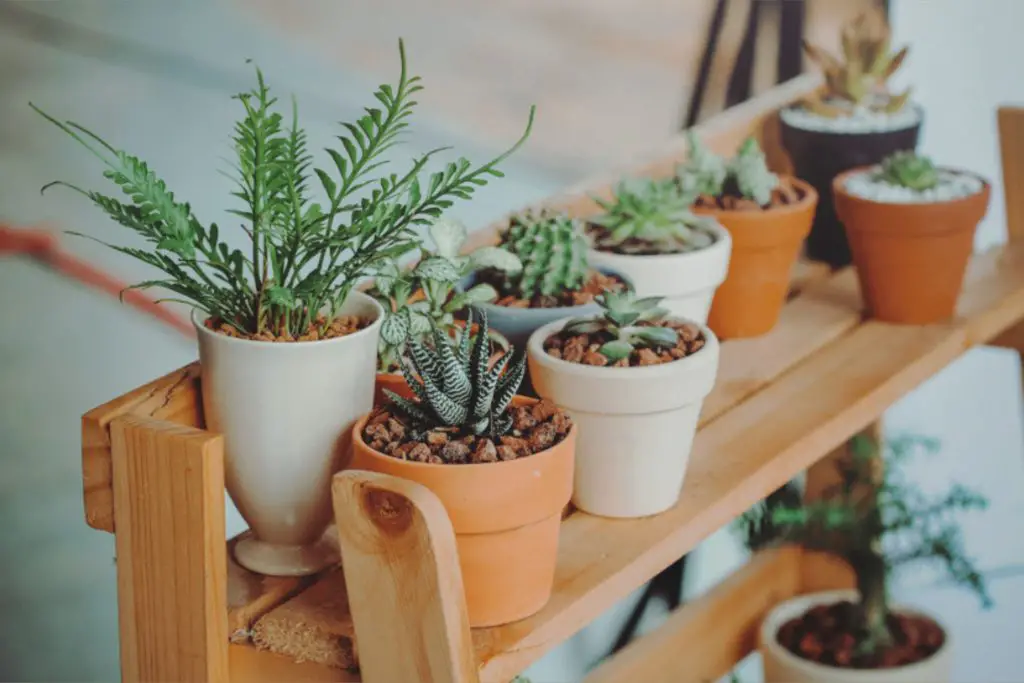5 Indoor Plant Care Tips to Ignore

I am all about keeping things simple and fuss-free. I have no patience for things that complicate life. Things that take up time and require a lot of effort.
Plants are potentially one of those things that could take up a lot of your time.
And worst still they can consume a fair bit of your resources – the cost of buying the plant, soil, fertiliser and all the watering that you do. And in the end, you could end up with nothing but a dead plant on your hands. It can be a real bummer.
I am into making plant care as fuss-free as possible, requiring minimal resources, while still ensuring the plant is alive and thriving.
If you want to know what this plant care routine looks like, enter your details below and in a couple of steps it will be emailed to you.
[convertkit form=2817642]
In the meantime, I wanted to outline some tips that most people swear by, which I completely ignore. I think there is some well-meaning advice out there that can work for most people, but for someone who does not have a green thumb and needs a simplified routine, these tips did not help me at all. If you are like me, keep reading so you can learn from my mistakes.
1. Stick your finger in the plant to know when it needs watering
Sure this is one way of figuring out whether your plant needs watering. But honestly, when I have followed this advice I am left feeling muddled and confused – I mean how wet is wet? Did I put my finger in deep enough? And the bother of dirty fingernails (which sounds entirely precious but I’m sure there are others out there that feel the same).
Another common piece of advice is – lift the pot and “feel” if it needs watering. The rule of thumb is, if it “feels” heavy it doesn’t need a water, if it “feels” light you need to water the plant.
I’m sure for all the green thumb plant whisperers out there, this method works like a charm. For those of us unable to spend the time needed to know each and every plant intimately, this is another one of those tips that you can ignore.
I find it unnecessary when a good water meter does the job far more accurately than my fingers or my “feeling” the plant would ever do.
There are many that would disagree with me on this but I have found the $11 water meter I brought from Bunnings to be a reliable tool for the last 6 years. It really takes the guesswork out of watering and plant care.
2. Follow a watering schedule
Again another one that doesn’t work for me. I’m not sure how this works for anyone for that matter.
A plant’s watering needs can vary depending on the location it is placed in, the temperature, the humidity levels, the light levels, how deeply you watered it last time, whether you have been running heating or air conditioning etc. And these variables change over time.
To stick to a strict (let’s say) weekly watering schedule would not help the plant at all. You need to water a plant when needed – not according to a schedule recommended on the care instructions or based on what experts tell you are the watering needs of the plant.
There are many out there that agree with me on this, but I still wanted to mention it because I do see the occasional comments out there like “I recommend watering so-and-so plant weekly” – any advice along those lines can be very misleading.
Check out those that agree: https://www.millcreekgardens.com/how-to-properly-water-indoor-plants/ and https://www.ourhouseplants.com/guides/watering
3. Water when your plants look sad
I’m pretty sure people are not recommending watering as a cure-all for all sad droopy looking plants, but it does seem that way sometimes.
The advice that you water your plants when the leaves have dropped and are looking sad, is good advice for the most part but it’s not foolproof advice.
That’s because it is possible your plant could be looking sad because it is suffering from root rot. In which case, watering the plant just makes things worse.
So what do you do? Well, I would recommend using your water meter and sticking it down into the soil to see what the moisture content is like. If it’s wet and the plant is looking sad, time to take the plant out of the pot to see if there is any root rot. If not look at watering the plant.
4. Mist your plants
It’s a bit of a myth that misting your plant’s assists in improving the plant’s health. The thinking is that it provides the extra bit of humidity that some plants need.
In reality, misting leaves does very little to increase humidity – it may increase humidity for a couple of minutes but that’s it. And it doesn’t increase humidity by a substantial amount – it’s only a slight increase.
If you are doing it to keep your leaves clean, you may be doing more harm than good. Wet leaves can be very inviting to pests and diseases. You are better of getting a damp cloth to clean the leaves if they need it.
5. Pots must have drainage holes
I’m going to sound like I’m fencing sitting here but yes, pots with drainage holes are ideal – I am about making plant care as easy and simple as possible and having drainage holes in your pots makes life pretty simple. Your plants are less likely to be overwatered since any excess water can drain freely out of the pot. This then reduces the likelihood of root rot.
However, if you embrace the use of a water meter, you will find you can control the water levels in a pot that has no drainage holes. As a result, taking care of a plant in a pot without holes is not so complicated.
I’ve thrifted a number of mugs, bowls and vases from the second-hand stores and I have been able to grow the same plant in them for years.


The trick is to water it when the water meter is reading more dry than moist.
Note: I did fuss around with using pebbles to create a false bottom but that never worked out for me. Watering when mostly dry was key.
So that’s some of the typical tips and tricks I don’t follow – some because they are just myths with little proof (like misting) and some I discovered through my own experience (like drainage holes).
And yes, if you are wondering, I do have a number of indoor plants that are growing successfully. Something like 70+ plants at the moment in my 3 bedroom home. It’s not a massive collection compared to some out there but it’s a manageable amount.
So that tells you what I don’t do. If you would like to know more about what tips I do follow, enter your email address below and the routine I follow will be sent to you:
[convertkit form=2817642]




